|
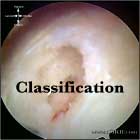
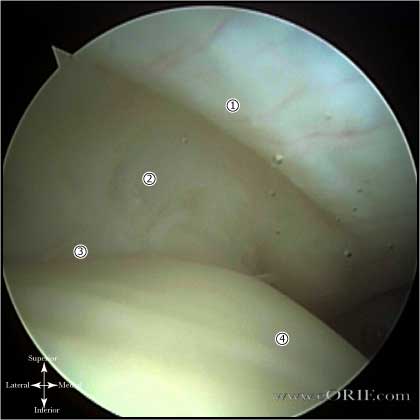

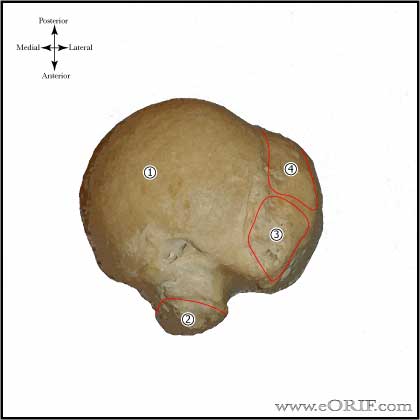
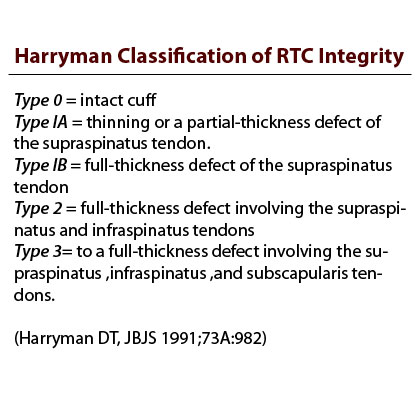
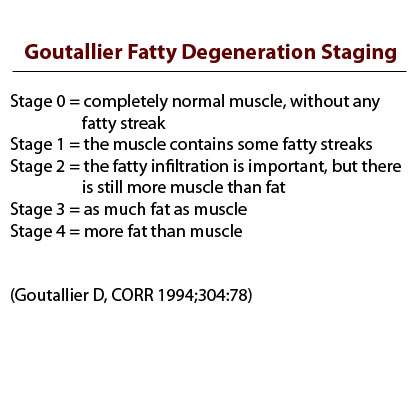
|
- synonyms: Rotator cuff repair, RTC repair, RC repair
RTC Repair CPT
RTC Repair Indications
- Patients who have failed nonoperative treatment
- Symptomatic, documented full-thickness tear of the tendon
- Acute painful tears in young patients.
- Tears associated the dussen loss of strenght and function.
RTC Repair Contraindications
- Patients who have failed nonoperative treatment
- Symptomatic, documented full-thickness tear of the tendon
- Acute tears in young patients.
- Tears associated the dussen loss of strenght and function.
- No absolute contraindications
- Patient's medical condition may preclude anesthesia
- Presence of a medical condition, such as the uncontrolled muscle activity of Parkinson's disease and paraplegia of the weight-bearing shoulder have been associated with a high failure rate
- Inability or unwillingness of the patient to participate postoperatively, in protection of the tendon repair and in the rehabilitation program
RTC Repair Alternatives
- Non-operative Treatment
- Open RTC repair
- Arthroscopic RTC repair
- Latismus Dorsi Tendon transfer
- Reverse TSA
- Hemiarthroplasty
- Shoulder arthrodesis
RTC Repair Pre-op Planning / Special Considerations
- Indications for resection of the acromioclavicular (AC) joint in the surgical treatment of cuff tears include clinical tenderness or radiographic changes of arthritis in the acromioclavicular joint, inferior protruding osteophytes contributing to the impingement syndrome, and a need for easy exposure of a retracted supraspinatus tendon
- Open repair: Advantages=allows direct visualization. Disdvantages=requires removal of anterior deltiod with increased post-op pain and potential for faliure of deltoid repair.
- Mini-open Repair: Advantages= deltiod is not removed, less post-op pain.
- Arthroscopic Repair: Adantages=decreased scarring, easier rehab, decreased pain, improved cosmesis. Disadvantages' potentially higher recurrence rate for large/massive repairs.
- Assess tear: Normal RTC tendon is 14mm thick. Assess depth with probe. Probe generally has 3mm tip
- Cuff reatraction=none, minimal, moderate, severe
- Tendon quality: good, fair, poor
- Mark tear location with 2-0 PDS suture
- Retear rate is lower with a double-row construct for small and medium-sized tears. (Millett PJ, Clinical and structural outcomes after arthroscopic single-row versus double-row rotator cuff repair: a systematic review and meta-analysis of level I randomized clinical trials. J Shoulder Elbow Surg. 2014 Apr;23(4):586-9)
RTC Arthroscopic Repair Technique
- Pre-operative antibiotics, +/- regional block
- General endotracheal anesthesia
- Beach chair, of lateral position. All bony prominences well padded.
- Examination under anesthesia.
- Prep and drape in standard sterile fashion.
- Perform Shoulder Arthroscopy.
- Classify tear: Harryman Classification;
- Multiple repair techniques available. See various anchor and instrument manufacture websites at right for technique descriptions and videos. Example: arthroscopic Repair using Smith&Nephew EliteShoulder System
- Close portal sites. Dressing
- Place in shoulder immobilizer with abduction pillow.
RTC Open Repair Technique
- Pre-operative antibiotics, +/- regional block
- General endotracheal anesthesia
- Beach chair position (scalene block or GETA), secure head, bump under medial border of scapula. All bony prominences well padded.
- outline coracoid, acromion
- inject 1/500,000 epinephrine along 6cm incision either anterolateral or lateral
- undermine flaps
- split deltoid in line with AC joint do not exceed 5cm to avoid injury to axillary nerve
- The acromial branch of the thoracoacromial artery crosses the top portion of the coracoacromial ligament.
- make sure that both anterior and posterior bands of the coracoacromial ligament are removed
- The deltoid is detached from the AC joint
- anterior acromioplasty
- partial/entire distal clavicle excision
- thickened adherent subacromial bursa is separated from the torn cuff tissue and removed. Gentle internal and external rotation is helpful in distinguishing the rotator cuff tissue, which can be seen to rotate with the extremity, from the thickened adherent bursa which is less mobile
- Classify tear: Harryman Classification;
- large tear cross cut rasp 14mmx7mm, stryker, stryker reciprocating saw, sag saw, Gelpi, osteotome, Mitek
- subscapularis tears generally repaired open. Biceps tenodesis or tenotomy during repair is associated with improved outcomes (Edwards)
RTC Repair Complications
- Recurrent tear: 5% to 15% of surgically repaired tendons will re-rupture. If adequate decompression has been done, the symptoms usually do not require further surgery
- Hardware failure / Anchor pull-out
- Acromion fx
- Infections: Proprionobacter acnes especially with mini-open RTC repair (Herrera MF, JSES 2002;11:605
- Stiffness
- CRPS
- Nerve injury: Axillary nerve, Brachial plexus
- Fluid Extravasation:
- Chondrolysis: though to be related to heat from electo cautery or radiofrequency probes used during capsular release or capsular shrinkage.
- Hematoma
- Chondral Injury / arthritis
- Instrument failure
- Deltoid dehiscence (open repair)
- Anterior-superior instability / migration:
RTC Repair Follow-up care
- Abduction sling for 6 weeks with the arm in slight abduction (20°-45°, promotes better blood flow to the supraspinatus, minimize tension on the repair), may take off to eat, shower, and to use arm for desk work.
- Cryotherapy deceases pain, improves sleep and decreases need for pain medication. (Speer KP, JSES 1996;5:62).
- Must have sling on when up walking, or when sleeping
- No smoking for 8 weeks prior to surgery and 8 weeks after surgery. (Galatz LM, JBJS 2006;88A:2027).
- No NSAIDs for 6 weeks after surgery (Cohen DB, AJSM 2006;34:362).
- May drive after one week and not taking narcotic pain medications
- Start physical therapy 2-3 days post-op. Physical therapy proceeds through 4 phases. (Millett PJ, JAAOS 2006;14:599-609).
Phase 1: Passive Range of Motion (0 to 6 weeks).
Phase 2: Active Range of Motion (6 to 12 weeks).
Phase 3: Strengthening (10 to 16 weeks).
Phase 4: Advanced Strengthening (16 to 22 weeks)
- At 6-weeks discontinue sling, and begin overhead stretching.
- 12 weeks begin theraband strengthening
- Can not try to comb hair with operated arm until six weeks post-op
- Small/medium tear may play golf at 6 months
- Large/massive tear may play golf at 1 year
- Small/medium tear lift weights at 6 months
- Large/massive tears lift weights at 1 year
- Muscle atrophy and fatty inflitration is not reversable. (Fuchs JBJS 2006; Yamaguchi JBJS 2004)
- RTC Repair Rehab Protocol.
- MRI Grading of Post-op RTC integrity.
- Outcome measures: ASES score, pain scales.
RTC Repair Outcomes
- Most predictable result of surgical treatment is pain relief. However, return of strength is unpredictable
- 91% satisfactory pain relief at 13years post-op with significant improvement in active abduction, and ER motion and strength for open repairs with acromioplasty. (Cofield RH, JBJS 2001;83A:71).
- 96% Excellent to good outcomes with 98% patient satisfaction for arthroscopic repair of RTC tears. (Murray TF, JSES 2002;11:19).
- Results for 0pen rotator cuff repair for chronic tears do not deteriorate with time (ten years) (Galatz LM, JBJS 2001;83A:1052).
- 69% of open repairs and 53% arthroscopic are intact by MRI at 1 year f/u. Repairs have similar clinical outcomes, but large tears have twice the retear rate after arthroscopic repair. (Bishop J, JSES 2006;15:290).
- Return to high level throwning after RTC repair is uncommon (Mazoue CG, AJSM 2006;34:182).
- Partial Thickness: 93% patient satisfaction for partial thickness tear completion and repair. (Kamath G, JBJS 2009;91A:1055)
- Rotator cuff repair for full thickness tears = net societal cost savings for patients under age 61 and greater QALYs and is cost-effective for all patients. (Mather RC, JBJS 2013;95:1993-2000)
- Outomes of arthroscopic repair of massive rotator cuff tear: 94% rate of failure of healing, at two years follow-up. 10 year follow up nearly all will have proximal humeral migration or cuff tear arthropathy. Clinical improvements and pain relief are durable at 10 year follow up despite failure of repair. (Paxton ES, JBJS 2013;95A(7);627)
- Outcome measures: ASES score, pain scales.
RTC Repair Review References
- Burkhart SS, A Cowboy's Guide to Advanced Shoulder Arthroscopy, 2006
- Williams GR, Rockwood CA Jr, Bigliani LU, Iannotti JP, Stanwood W, Rotator Cuff Tears: Why do we repair them? JBJS 2004:86A:2764)
- Burkhart, S. S. JAAOS 2006;14:333-346.
|